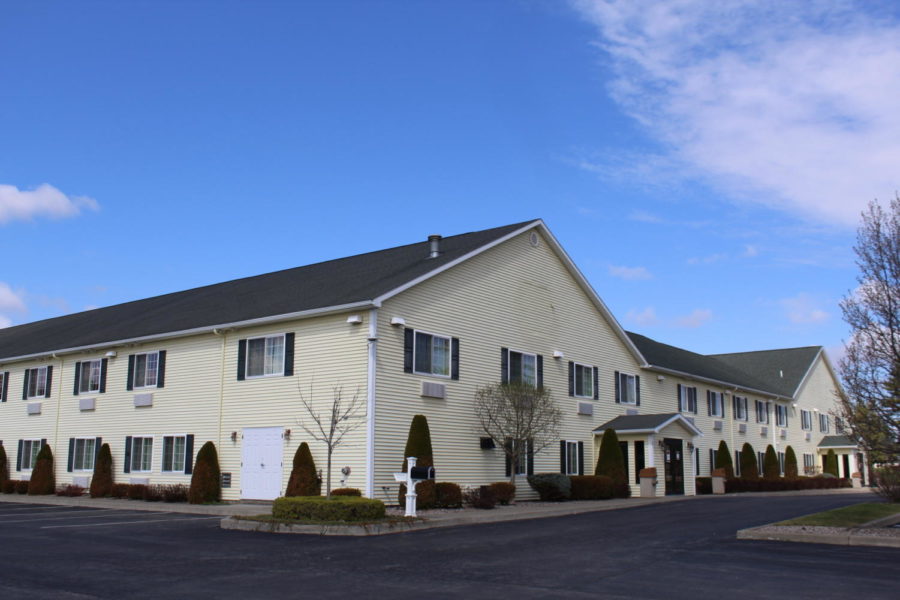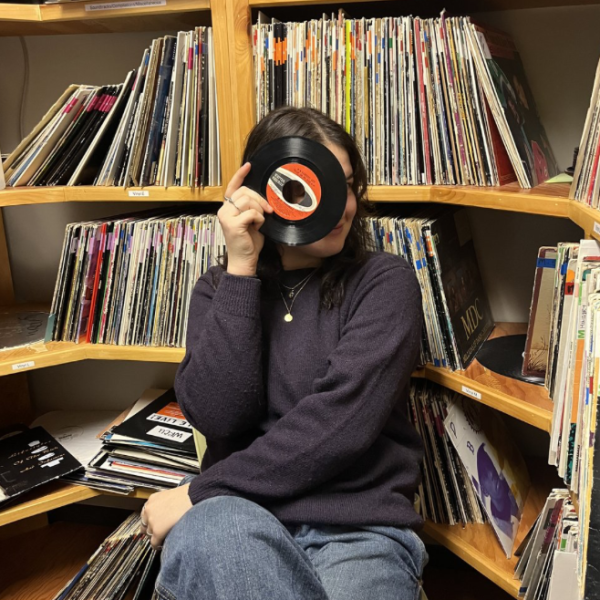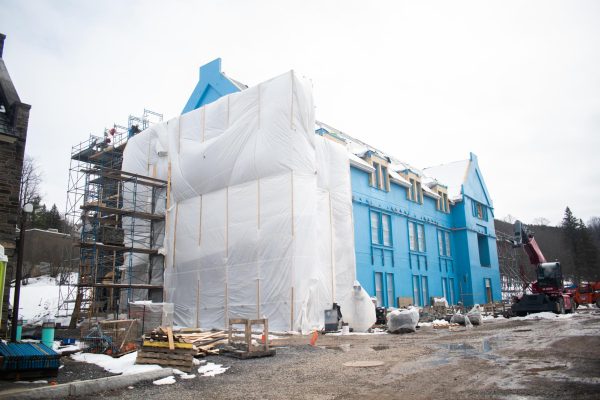Colgate Advances to Gate 3 of Reopening After Surge In Cases and Move Backwards to Modified Gate 1
Colgate advanced from Gate 1 to Gate 3 of reopening on Tuesday morning in response to the reduced amount of positive COVID-19 cases following a recent campus-wide outbreak. In an email sent to the student body on Monday, April 19, Acting Chief Diversity Officer and Vice President for Communications Laura Jack cited results trending in the “right direction,” as reflected on the Health Analytics Dashboard, as reason to move forward to Gate 3. Indoor gatherings of less than 10 are now permitted, and the dining halls shifted to full operation hours and in-person dining on the morning of Tuesday, April 20.
“We currently have nine students in isolation — six at the Wendt and three at home. Our thoughts are with them and the 97 students in close contact quarantine — 10 at the Wendt, 82 at home, and five in off-campus housing,” Jack said in her email. “The [Health Analytics Team (HAT)] will review the data again on Friday to see if a suggestion to move to Gate 4 is appropriate.”
The decrease in positive cases and close contacts comes after a surge announced Monday, April 12, on which Jack reported an increased number of cases on-campus, many asymptomatic. Initial numbers were reported as 15 positive individuals and 77 students in close contact quarantine by Jack, with an increase to 19 students and one employee in isolation, and 14 employees and 134 students in close-contact quarantine leading to a return to a Modified Gate 1, as announced in a Colgate Together Special Digest by Jack on Tuesday, April 13.
“This has always been a part of the University’s plan if we detected an uptick in new cases and close contacts. This recommendation was made this afternoon by the Task Force on the Reopening of Campus and the Health Analytics Team, and is out of an abundance of caution to stem the spread of the virus,” Jack said in the April 13 digest.
University President Brian Casey said the rise in cases and close contact was a cause for concern for both the University and Madison County officials, who reached out to the University after receiving testing data.
“It was last week that we noticed. It was all of sudden… Last week we really thought it was centered around one or two residence halls up the hill and then it was over the weekend that that changed,” Casey said. “It was [Tuesday] morning that we were contacted by the county saying ‘By New York State definitions you are now a cluster.’ And the cluster is determined not so much by the infection rate but patterns. We thought ‘Oh, wow, there’s one residence hall that might be at the center of this. Let’s take a look at it, but then what happened was by Tuesday we got 18 cases and it was [across] all four classes on campus and off campus. So now there’s no longer a pattern, it’s a cluster. We had to act.”
According to Jack, contact tracing did not reveal a single source for the influx in cases. Instead, infections stemmed from multiple sources, including gatherings, group dining and travel.
Casey said that both he and Jack were cognizant of the flow of false information circulating among students on campus and on social media, including the Colgate Parents’ Facebook group, and aimed to direct blame away from any one source.
“We hear the rumors that other people hear. We were combatting the notion that it was a singular person or singular event. We saw it in first-years, sophomores, juniors, seniors; it’s spread [by] more than [one source]. We wanted to stop false information and that sense of blame,” Casey said.
Though both Casey and Jack stated there was no one source of the viral spread across campus, test results and wastewater testing from Drake Hall during the week of Sunday, April 4 showed multiple positive cases. After finding positive results, Drake Hall residents underwent two rounds of targeted testing. The University planned on waiting for test results during the weekend before April 12 to move the campus back into Gate 1, according to Casey.
Ciccone Commons Co-director and Professor of Psychology Rebecca Shiner sent an email on April 8 to Drake Hall residents, following up on an email from Associate Vice President for Campus Safety, Emergency Management and Environmental Health and Safety Dan Gough which asked Drake Hall residents to get tested immediately.
“There are multiple residents of Drake who have tested positive for COVID[-19], and this has led to a substantial number of Drake residents having to be quarantined because they were close contacts. It is important that we immediately stop the spread of COVID[-19] among Drake residents,” Shiner said. “We need to do our part in Ciccone Commons to follow the guidelines; I can’t bear the thought of our residents being the source of a large-scale outbreak of COVID[-19] on campus.”
Sophomore Danielle Goldbaum is a Drake Hall resident who had to be tested and evacuated when her suitemate tested positive.
“It was scary because this happened first semester, too, where Drake was the hotspot. It’s just scary to know that COVID[-19] is present all around you because we were doing so well, and I felt very safe but then all of a sudden it was in my dorm where I live,” Goldbaum said. “It was a mess. My other roommate was sobbing. It’s scary! It’s a deadly disease and she had it. It was a miracle the rest of us didn’t get it.”
Goldbaum said there was a sense among Drake Hall residents that there were many in the building who had tested positive or were close contacts before Gough sent out communications, which led to higher cooperation among residents during the shift back to modified Gate 1.
“Modified [Gate 1] I think was needed. I don’t really think people were annoyed. I think it was moreso like, ‘OK this is really scary. Everyone I know is testing positive or a close contact.’ We had what, 150 close contacts? So it was good [to move backwards],” Goldbaum said.
As a result of increased cases and close contacts, modified Gate 1 guidance restricted unapproved travel, allowing exceptions only to accommodate vaccination appointments, medical appointments or emergency personal requests. Among the changes, meals also returned to a grab-and-go format, similar to Gate 0 of Reopening: In-Residence Quarantine.
Casey said the shift in dining operations proved the most difficult aspect of the backwards move to a modified Gate 1.
“Food is the hardest part to switch quickly [when moving backwards],” Casey said. [The hardest part of food] is the staffing. The staffing we have around grab-and-go is very different. The first night of going backwards, we had fairly narrow food hours but we were able to get them back to normal the next day, so it’s really about people more than anything.”
In line with the restrictions from Gate 1 guidance from early Feb. 2021, in-person classes continued to meet in-person, and Case-Geyer Library, Trudy Fitness Center and Lineberry Natatorium remained open. Groups of 10 people or fewer were allowed to gather outdoors while social distancing and wearing masks, and socializing was permitted within extended family units in common rooms within one’s own residence hall. Restrictions did not allow for cross-hall visitation.
Colgate also implemented on-demand antigen testing in the James C. Colgate Hall of Presidents for students planning to leave campus or concerned about exposure to COVID-19. This testing, which was started on Wednesday, April 14, is in addition to the pre-established bi-weekly surveillance testing being conducted in the 113 Core.
In her April 13 email, Jack clarified that a reduction in positive cases, close contacts and wastewater results alongside increased compliance with the Commitment to Community Health and Wendt capacity and staffing would all be factors that went into determining which Gate Colgate would enter after reevaluation on Monday, April 19. As of Tuesday, April 20, only metrics showing Colgate Staffing Levels, Student Health Services and Student Quarantine/Isolation are at Moderate Alert, with Student Quarantine/Isolation trending towards a decreasing alert level, and the other 17 metrics at Low Alert or New Normal. There are 9 active cases in isolation as of 11:59 p.m. on Sunday, April 18.










